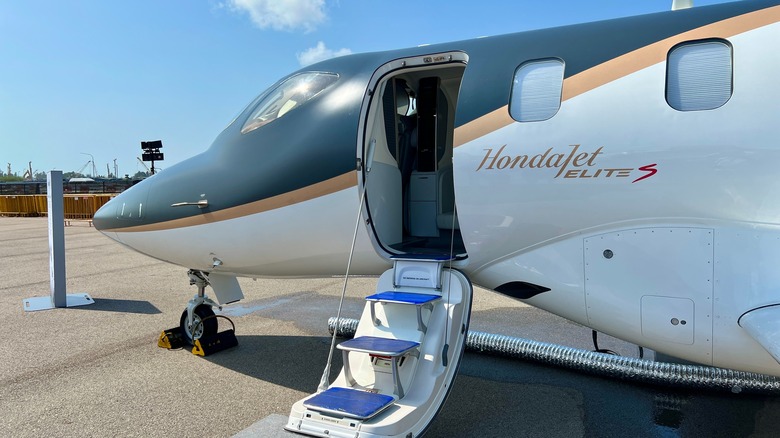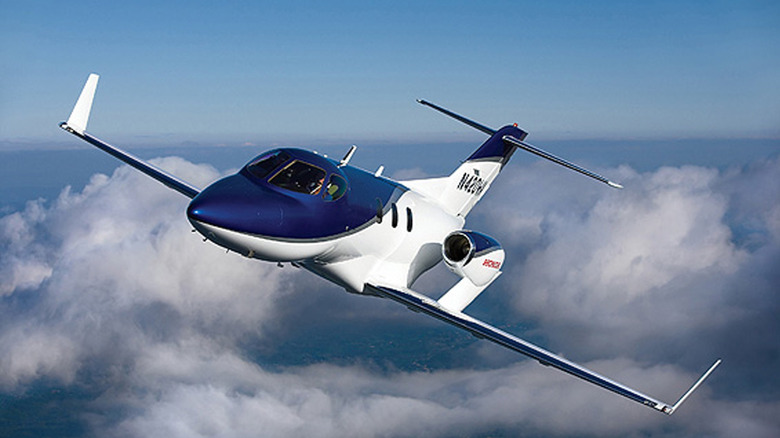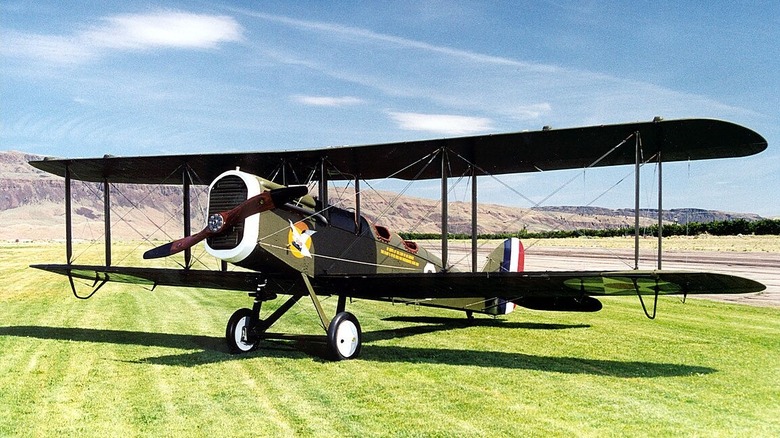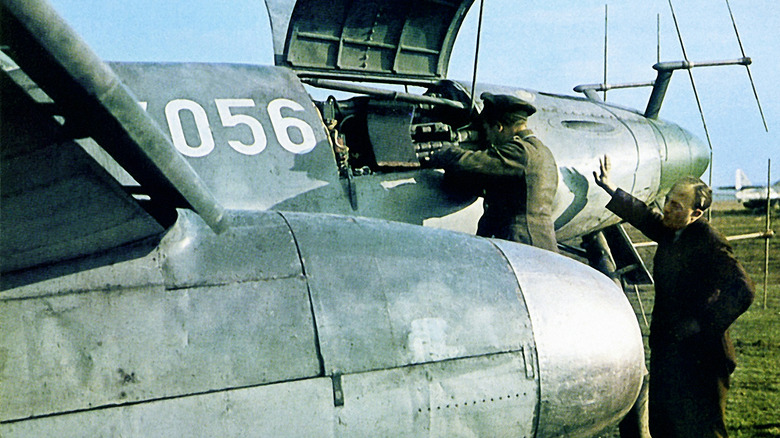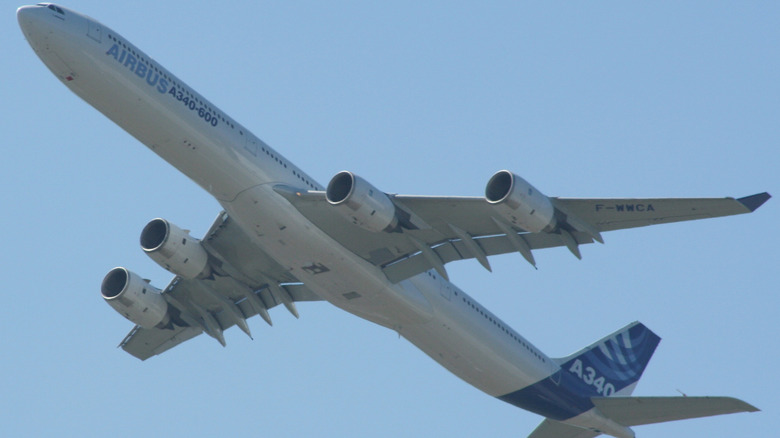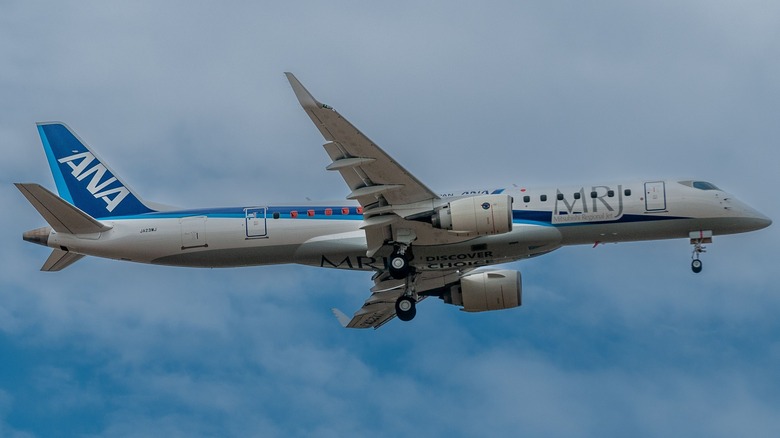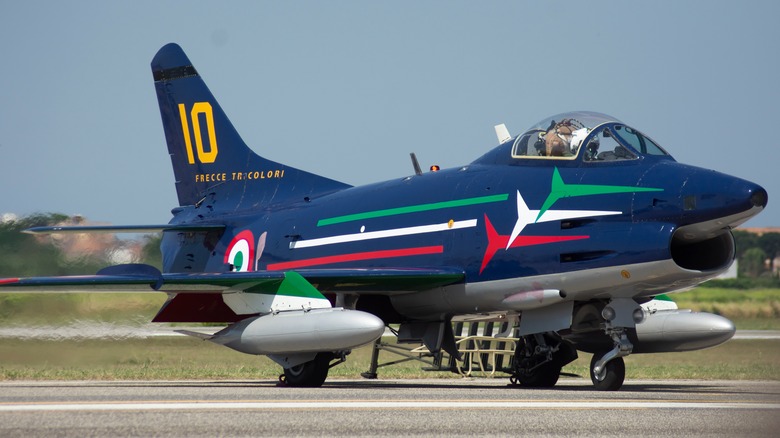6 Brands Known For Cars That Also Make Jet Engines
Much as it can be harmful to an actor's career to be typecast, it can also be deadly for a company to offer one type of product and one type only. Many of us know companies and brands for specific types of products, and are quite surprised that they can also offer a range of things outside of that. For instance, did you realize that along with its iconic motorcycles, Harley-Davidson makes sneakers, sunglasses, and more?
It's also possible to branch out while staying in a similar overall arena. After all, if you make cars and their power trains, what's so different about making jet engines? Well, lots of things, of course, but several iconic brands in the auto world have turned their considerable talents to both. Sometimes to long-lasting success, other times not so much.
From Honda to Kawasaki, here are some of the brands that have done just that. In each case, we'll see which jet engines they made, when they did so, and some of the vehicles they powered.
Honda
This brand is a heavyweight of the auto world, with Honda's most successful models including the S2000 and, of course, the Civic. Honda Aircraft Company has declared part of its mission to be enhancing freedom of mobility, and it seems this isn't something that can be done only in a car on the ground. Not even the iconic Civic.
It's been almost 20 years since Honda Aircraft's founding in 2006, and one of the primary fruits of its efforts is the HondaJet, powered by two GE Honda HF120 engines. These were developed by Honda and General Electric, which joined forces in October 2004 to create GE Honda Aero Engines LLC, with the aim of collaborating on a business jet.
The engines, approved by the FAA in December 2013, are built in North Carolina, at GE Honda Aero Engines' Burlington base. June 2022 marked the creation of the 500th engine there. Each engine offers 2,095 pounds of thrust, with Honda declaring that the HondaJet Elite II can cruise at 486 mph and at altitudes of up to 43,000 feet.
Ford
The Blue Oval doesn't currently produce jet engines, but it has an association with aircraft engines that dates back over a century. The auto industry's manufacturing might played a huge part in the creation of weapons and other pieces of equipment throughout World War I, and Ford was central to that effort.
In 1917, the famed Liberty engine was designed by the Hall-Scott and Packard automobile companies, and Ford was one of the companies that manufactured them. Ford built 3,950 Liberty engines, many of which were installed in the De Havilland DH-4s built in the United States. Though it wasn't a jet engine, it offered up to 443 horsepower, quite potent for its time.
Like any storied brand, Ford has also produced some experimental offerings over the years. It has made turbine engines, not for aircraft, but for potential use in cars as well as "Big Red," a hefty truck built in 1964, and powered by an experimental gas turbine engine of Ford's design. It offered 600 horsepower, but, in operation, produced too much heat to be practical. Ford's proclivity for gas turbine engine research extended to buses and other vehicles, too: The decade before, a Ford Thunderbird had been outfitted with a Boeing-built gas turbine.
BMW
BMW is best known today for its cars, but here's a fact that separates the German brand from others in this rundown: It began its engine-building career in the aircraft sphere, rather than the auto one. The very first model BMW built was 1917's six-cylinder Illa aircraft engine, which put out 185 horsepower.
So aircraft were be a significant part of the brand's work from the very beginning, and decades later it created a jet engine for aircraft — several, in fact. The first was the BMW 109-003, a turbojet introduced in 1939, with flight testing begining in 1942 and continuing through 1944. Jet engine technology as a whole could have been decisive in World War II had it been readily available earlier in the conflict, and BMW could have been central to that effort for Germany.
As it was, though, the technology wasn't adopted in the Arado Ar 234 as was intended due to Allied bombing that slowed the plane's development. It also was in trials to be paired with the now-legendary Messerschmidt 262, the first jet fighter, which itself failed for a variety of reasons.
Rolls-Royce
Rolls-Royce is known for injecting British sophistication into its vehicles, such as the Phantom III Sedanca de Ville driven by Goldfinger in the James Bond movie of the same name. The brand is also a heavyweight in aviation, and a lot of commercial and military jets travel the world daily on Rolls-Royce jet engines.
While BMW was developing engines in World War II for the emerging jets of the German luftwaffe, the Royal Air Force in Britain armed itself with Rolls-Royce's Welland, the brand's first jet engine, and the first jet engine used in war. It was initially used in 1944, powering the Gloster Meteor, which was later equipped with the Rolls-Royce Derwent 8.
Today, Rolls-Royce develops jet engines including the long-lived Trent engine family. Among its members are the Trent 500 (which has achieved 24 million hours in flight with models like Airbus's A340) and the Trent XWB, which Rolls-Royce says has sold faster than any other widebody engine. Rolls-Royce also has a heavy presence in the United States, accounting for almost 6,000 jobs in 27 states, including large facilities in Indianapolis and Crosspointe, Virginia.
Mitsubishi
The Japanese brand Mitsubishi is well-known for cars like the Lancer and Lancer Evolution. It has also, of course, developed a range of engines for those cars, starting with the S6-type, which powered the Mitsubishi PX 33 back in 1935, and more recently including the reliable Mitsubishi 4G94 and 4D56 engines.
Mitsubishi also has extensive experience with jet engines. One early example from Mitsubishi Heavy Industry Auto Engines Ltd. is the TJM3 engine, a 1983 model designed not for a piloted aircraft, but for a target drone. Mitsubishi also shares the responsibility for developing jet engines with other brands, including the PW210, created in collaboration with Pratt & Whitney Canada; Mitsubishi designed, developed and manufactured the power turbine. This engine family has primarily been used on Sikorsky helicopters.
A less happy case is that of the GTF PW1200G engine, which was to power Mitsubishi's SpaceJet, a dual-engine model that would have been the first Japanese-made airliner. The plane, under development for 15 years before its 2020 suspension, was meant to carry less than 100 passengers on regional flights. It was canceled in 2023 as the project became too costly and delays compounded.
Fiat
It's difficult to list international car brands without an Italian automaker making an appearance. Sure enough, here's Fiat, engaging in some of the same experimentation as we've seen with Ford. Also, the wider Fiat family created some military aircraft. Let's take a look.
The Fiat Turbina is a uniquely styled piece of vehicle experimentation first seen seven decades years ago. It used, as the name would suggest, a jet engine, and it took an awful lot of ingenuity and creativity to bring it to glorious life. A sleek sports coupe with incredibly low drag and equipped with a Tipo 8001 turbine engine, this one-of-a-kind model took a first test drive in April 1954 but never entered full production due to its overheating and gas guzzling.
Under the name Fiat Aviazione, Fiat also developed military aircraft. The G.91R is one of these, a model with roots in a NATO project to create a swift, maneuverable jet fighter that would be operated by multiple member nations. It debuted in August 1956 and was initially equipped with the Bristol Siddley Orpheus engine, later replaced by a dual arrangement of General Electric J85s in the G-91Y variant.
The earlier Fiat B.R.20, meanwhile, achieved a Fédération Aéronautique Internationale world speed record that still stands, for a 242.94 mph flight in 1939. It was propelled to this great speed by two Fiat A 80 piston engines (adaptations of a Pratt & Whitney model), offering 2000 horsepower between them.
